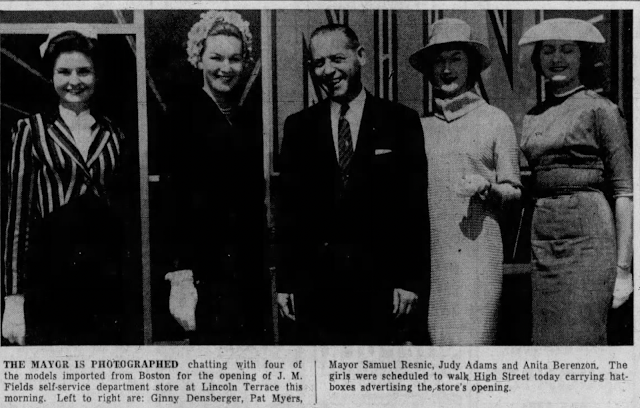The retail landscape was evolving in the 1950s. Plazas with multiple stores and substantial adjacent parking were being developed away from city centers. One such plaza was the shopping center constructed at the corner of Lincoln and Hampden Street.
Here's some background on the land: In April and May 1946, the Roman Catholic Bishop of Springfield purchased the bulk of what was to become the plaza from the Holyoke Water Power Company. The church also bought two other parcels along Hampden Street on the plaza's southwestern side from Eugene H. Lynch.
According to newspaper accounts, the initial plan was to erect a new Providence Hospital on the site. However, this was no longer necessary, as a new hospital was planned on Main Street near the West Springfield town line. The new hospital's dedication was held on May 31, 1958.
On January 24, 1956, the Roman Catholic Bishop of Springfield, a corporation, sold its Lincoln and Hampden St. holdings to Ranier Realty Trust from Boston, Massachusetts.
Two streets were discontinued in the process. Lafayette Street and Vine Street are shown on the 1911 atlas, which is shown below.
In August 1957, an announcement was made that a shopping plaza was to be built on the land. The stores include Stop & Shop, J. M. Fields, and others. Site work began in July, and construction would advance in September 1957.
J. M. Fields was the first store to open and held its Grand Opening on May 24, 1958. The 44,000-square-foot store was part of a 42-store chain. It offered shopping on one floor, 78 modern self-service departments, discount pricing, wide aisles, shopping carts, and a substantial parking lot.
On June 4, 1958, Stop & Shop and a branch of Holyoke National Bank celebrated their Grand Openings.
Interestingly, the plaza was known by different names in news accounts. Lincoln Terrace and Highland Plaza Shopping Center were evidenced within the same month as the stores and bank opened.
On October 2, 1978, Food Fair, Inc., the parent company of J. M. Fields, entered bankruptcy. At an early stage, it was indicated that J. M. Field Stores would be unaffected by this process. During the proceeding, Food Fair liquidated over 200 grocery stores. However, Food Fair Inc. could not find a buyer for the 70-store J. M. Fields discount chain, which employed over 5,000 people. The closure of J. M. Fields was reported as the second largest in U. S. retail history.
A liquidation sale was held at the Holyoke store on April 27, 1979. By 11 a.m., over 2,500 shoppers had passed through the doors. Checkout lines stretched halfway to the rear of the store. At times, cars lined up from the Muller Bridge to Northampton Street. J. M. Fields's 21-year run in Holyoke was ending.
Source of news articles: Newspapers.com (paid subscription): Citations: Holyoke (Massachusetts) Transcript-Telegram; publication dates are shown.
Richard's Standard Atlas of the City of Holyoke Massachusetts, 1911































No comments:
Post a Comment